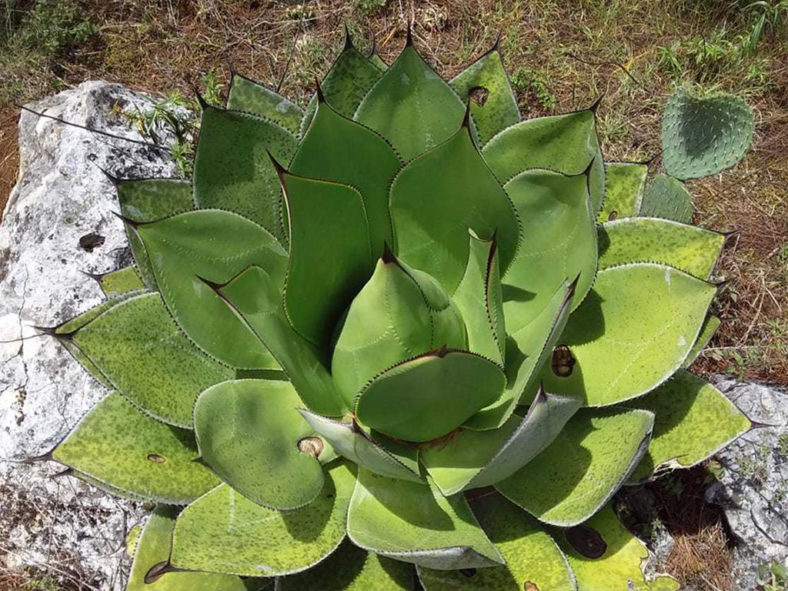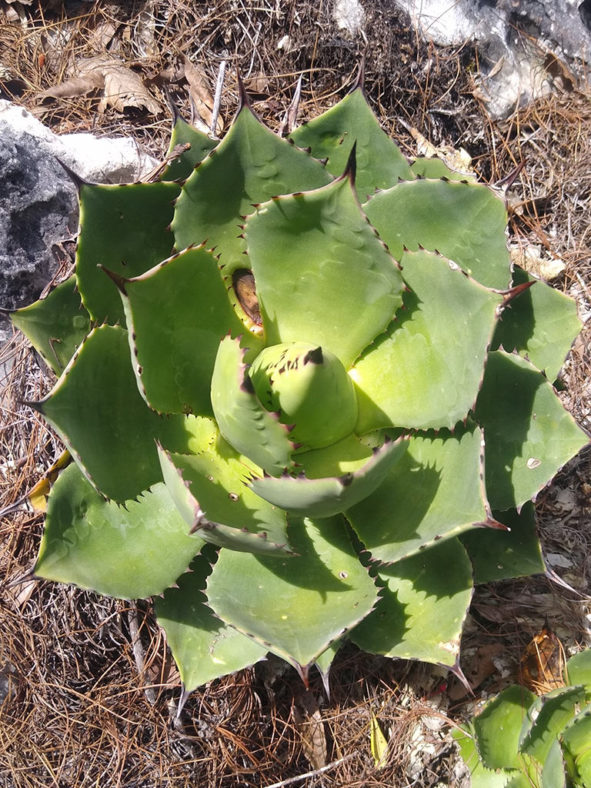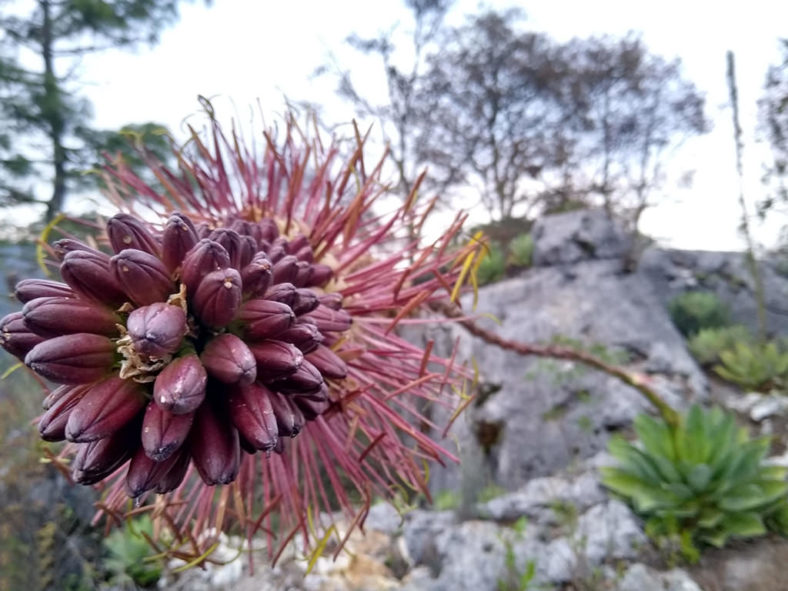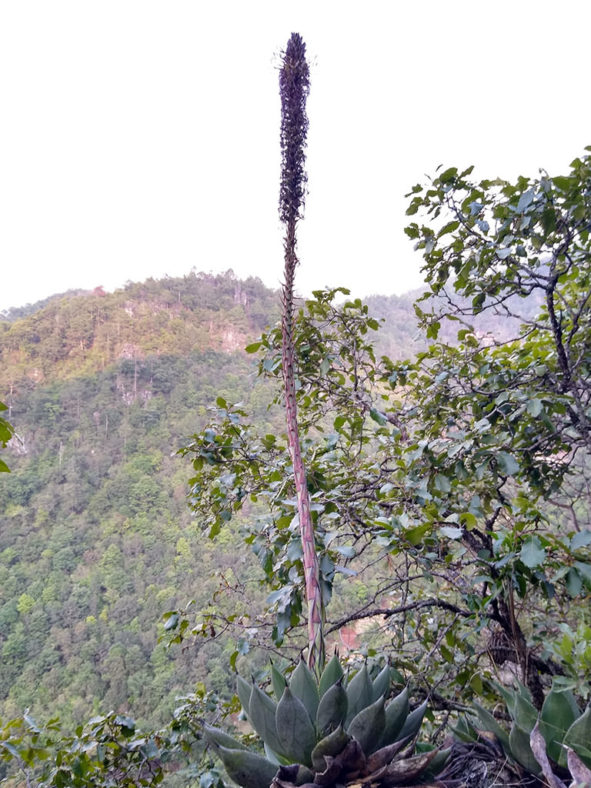Scientific Name
Agave chiapensis Jacobi
Synonym(s)
Agave teopiscana
Scientific Classification
Family: Asparagaceae
Subfamily: Agavoideae
Genus: Agave
Etymology
The specific epithet "chiapensis (chee-ah-PEN-sis)" means "of or from Chiapas" and refers to Chiapas, the southernmost state in Mexico.
Origin
Agave chiapensis is native to Mexico. It grows on limestone cliffs in pine-oak forests in Oaxaca and Chiapas at elevations ranging from 2,950 to 8,200 feet (900 to 2500 m).
Description
Agave chiapensis is a succulent plant that forms rosettes of bright green to glaucous green leaves with dark brown to greyish, deltoid teeth along the margins and a strong terminal spine. The rosettes can grow up to 2 feet (60 cm) tall and 3.3 feet (1 m) in diameter. The leaves are variable in shape but tend toward the ovate. They can measure up to 20 inches (50 cm) long and 6.4 inches (16 cm) wide. The marginal teeth are either small, closely spaced, measuring about 0.15 inches (0.4 cm) long, or larger, further apart, measuring up to 0.4 inches (1 cm) long. The terminal spine can grow up to 1.4 inches (3.5 cm) long.
The flowers are yellow or green, flushed with red or purple, and appear densely clustered on an unbranched stalk that can grow up to 6 feet (1.8 m) tall, usually in spring or summer. They can reach up to 3.8 inches (7 cm) in length.

How to Grow and Care for Agave chiapensis
Light: Like all Agaves, this plant requires full sun to partial shade. If growing A. chiapensis indoors, choose a bright, sunny window with as much sun as possible. From spring to fall, it loves going outside.
Soil: A. chiapensis tolerates most soils with good drainage but prefers sandy or rocky soil.
Temperature: During the growing season, it likes warm temperatures, while in winter, when resting, this succulent enjoys cooler temperatures. A. chiapensis can withstand temperatures as low as 30 °F (-1.1 °C). USDA Plant Hardiness Zones 10a to 11b, 30 to 50 °F (-1.1 to 10 °C).
Watering: From spring to fall, water thoroughly when the soil becomes dry. In winter, water sparingly about once a month. Plants in containers require more frequent watering than those in the ground.
Fertilizing: Give your A. chiapensis a small amount of fertilizer in the spring during the first two years. After that, established plants seem to take care of themselves.
Repotting: If you notice your A. chiapensis becoming pot-bound, repot it with fresh soil in a pot slightly larger than the old one. Give the plant a week or so to readjust before you water it again.
Propagation: Since it can take years to produce seeds, A. chiapensis is usually propagated by offsets. The best time to remove the offsets is in spring and summer. Sow the seeds in spring.
Learn more at How to Grow and Care for Agave.
Toxicity of Agave chiapensis
A. chiapensis is not toxic to humans but may be mildly poisonous to children and pets.
Links
- Back to genus Agave
- Succupedia: Browse succulents by Scientific Name, Common Name, Genus, Family, USDA Hardiness Zone, Origin, or cacti by Genus
Photo Gallery
Click on a photo to see a larger version.


